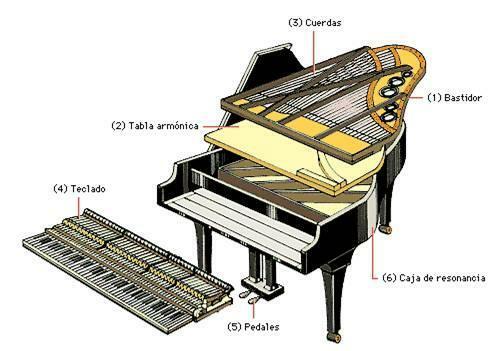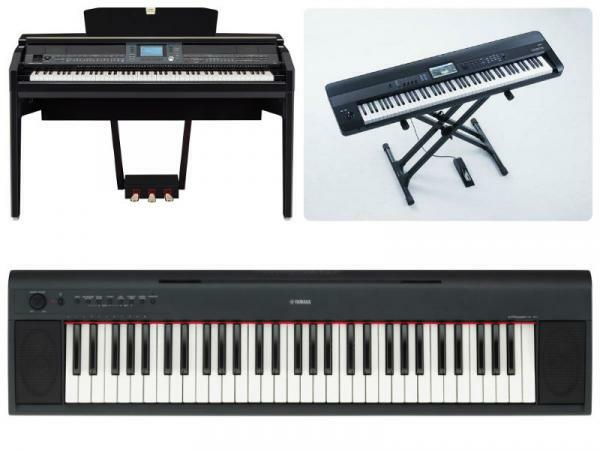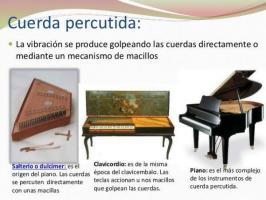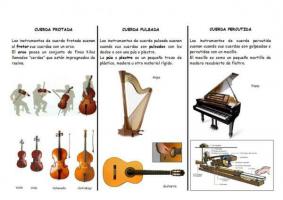The different TYPES of PIANOS that exist

Since centuries, piano and keyboard instruments overall they have remained to provide us with one of the most comprehensive tools for music creation and understanding. Over time, the piano evolved and changed to adapt to our artistic concerns. Today, we have many types of piano, depending on our needs and tastes so that each person can have an approach to this wonderful musical instrument. In this lesson from a TEACHER we will talk about the types of pianos, all those variations that allow us to meet the music.
The piano or "pianoforte" (which is the original name) belongs to the category of stringed instrumentsThis means that to create sound, it has strings that are struck. The piano is an evolution of past instruments such as the harpsichord and harpsichord.
Although this type of instrument was very popular from the Renaissance, it is not until 18th century that the first "pianoforte" is designed with the characteristics that we currently know. Wonderfully, the internal mechanism of an analog piano has hardly changed since its invention.
The piano it is very versatile thanks to its wide tessitura and its ability to produce several simultaneous notes, which also provides it with harmonic and rhythmic capabilities. For many musicians, the piano is the preferred tool for composing. In this other lesson we will discover all the piano parts so that you know better this fascinating musical instrument.

We are going to talk about the types of pianos that we can find today. The original piano has an analogous mechanism and we call them acoustic pianos, but today we have many versions that work with electricity. Many of them try to simulate the original sound of a piano, but others provide endless sounds that manipulate the electrical signal to create them.
Technically these instruments are "synthesizers", but since they also work through a keyboard (the set of black and white keys on a piano) they get a more accurate name: keyboards. Still, by extension these instruments are categorized as electric pianos.
Within acoustic pianos we find:
Grand piano
This piano has the strings placed horizontally, it is the original model and the one usually used for high-end concerts or formal events. These pianos are large, very expensive and require delicate maintenance, which makes them difficult to access. They generally have a full 88-key keyboard (52 white and 36 black), although less common models may have more.
There are several versions of the piano in this category and they are classified according to the size of the "tail", which is the area of the piano where the strings meet. The queue sizes are:
- Cola mignon: up to 130 cm in length.
- A quarter queue: from 131 to 189 cm in length.
- Half tail: from 190 to 225 cm in length.
- Three-quarter tail: from 226 to 255 cm in length.
- Big tail: greater than 256 cm in length.
Upright or wall piano
Is a more affordable version of the acoustic piano It also takes up much less space, since the area where the strings are located is vertical and can lean against the wall like any other piece of furniture in the home, hence its name. The resonance of an upright piano is always lower than that of a grand piano, but its sound is still very pleasant and provides the musician with the feel and sound of the original piano.
Even though it is much more affordable, this type of piano is still expensive, so many people decide to purchase a keyboard or digital piano before knowing if their dedication to studying the instrument will be durable.
Pianola
Is a version of the piano that became popular in the 19th century. This had a mechanism based on perforations in a paper roll, which allowed it to be changed to play different songs automatically, operating the keys mechanically without the need for a musician. It could also be played manually. Today it is an unusual version.

Image: 8piano.com
Continuing with the types of pianos that exist, we will now talk about electric ones. They can be classified as follows:
Digital pianos
It is a piano created for simulate the sound and feel of an acoustic piano, since they have a complete keyboard, keys with weight (resistance to the fingers) and sensitivity (weak and strong sounds). Even so, the digital piano works by means of electricity and the sounds are reproductions of previous recordings of other pianos. They have the option to listen with headphones or amplification and some have inputs and outputs MIDI (see MIDI controllers for more reference).
In the case of not being able to acquire a grand or wall piano, the digital piano is a good option, since that is more affordable and does not require maintenance or tuning like pianos acoustic.
Keyboards / Synthesizers
They have a simulated sound bank of all kinds, including the organ, wind or percussion instruments, sound effects and even the piano itself. Of this type there is an impressive number of brands and models that vary in many characteristics such as size, weight, quantity, sensitivity and weight of the keys, variety of sounds, options of use, control buttons and price.
Due to its transport capacity, many musicians of popular style genres opt for one of these, also having the option of amplifying themselves. Others look for specific models, since they have types of sounds that are associated with a specific musical genre or era.
MIDI controllers
They are keyboards used to connect to the computer and produce music With sound editing programs, many times they do not even produce sound by themselves, so it is necessary to connect them to the computer to use the sound banks that it can provide. MIDI means "Musical instrument digital interface" For its acronym in English, it works by computer data and offers many options of control and manipulation of sound. Although there are several types, the most common has a keyboard like that of a piano, which can vary in number of keys and control buttons.
The piano is one of the most accurate ways to visualize and approach music. Now that you know about the vast world of the piano, you can embark on the adventure of getting one or explore the different types of piano that we have talked about in this article by a TEACHER.



